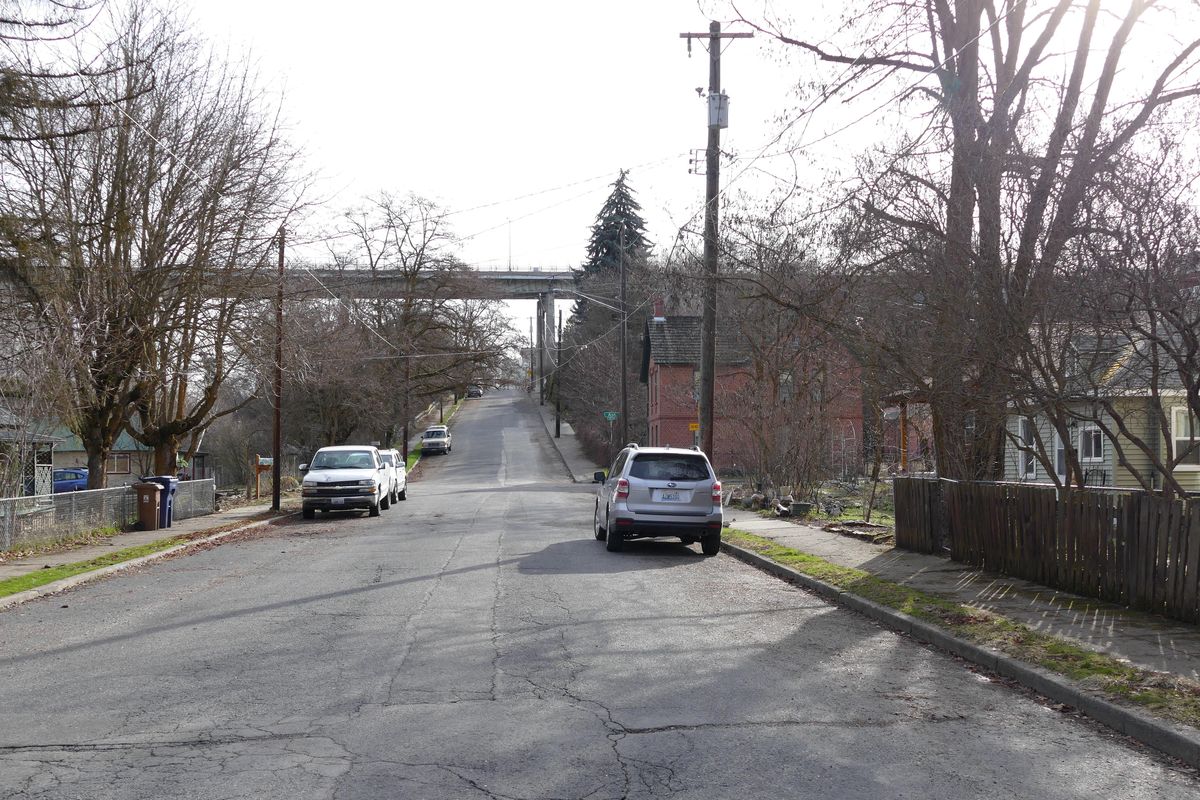Then and Now: Flooding in Spokane – it’s been worse

As authorities monitor flooding this week around the Spokane region, the damage sustained can’t compare to some of Spokane’s worst flooding seasons. There have been many years where floodwaters have hit the city’s low-lying areas.
In Vinegar Flats and Peaceful Valley, two of Spokane’s flood-prone neighborhoods, water from Hangman Creek and the Spokane River often threatened the homes of Spokane’s early blue-collar workers.
Peaceful Valley, the informal name for the neighborhood at the edge of the Spokane River west of downtown, was a seasonal camp and fishing grounds for the natives of the region before white settlers arrived. Later, it became a popular picnic spot and swimming hole. Starting around 1890, some of the city’s poorest workers bought tiny lots and built modest homes there. Many of the early residents were Finnish, but there were Germans, Swedes and other ethnicities as well.
Vinegar Flats, which grew up around Inland Empire Way highway, was built along Hangman Creek, also called Latah Creek, and was also composed of working class residents who built their own simple houses along the creek banks.
On May 15, 1957, the two neighborhoods saw high water and rushing runoff. Down in Vinegar Flats, storm water swept down Inland Empire Way, slamming into the home of Mr. and Mrs. R.J. Logan, who huddled in a panel truck for safety as water poured off the roadway into their home. Next door, Royal Stults had to wade to the barn to free their horse. “I walked this deep (hand across his chest) to carry out the old folks next door,” he said.
The Spokane River rose above its banks in Peaceful Valley. Water pouring off the bluff from Riverside Avenue brought rocks, dirt and trees down on homes. “The dirt flowed just like a river, burying my two cars and the neighbor’s car. The whole neighborhood was in an uproar,” said J.L. Greenwood of 1723 W. Clarke. “People were running out of their houses with clothes and belongings. We didn’t know what might happen.”
“We were caught like miners in a shaft cave-in,” said Mrs. W.V. Cismowski of 13 N. Cedar St. “The phone went dead and no one, we thought, could hear our cries for help.”
Greenwood’s home was filled and surrounded by five feet of rock and mud. He said, “It was nothing I’ve experienced before and I hope it will never happen again.”